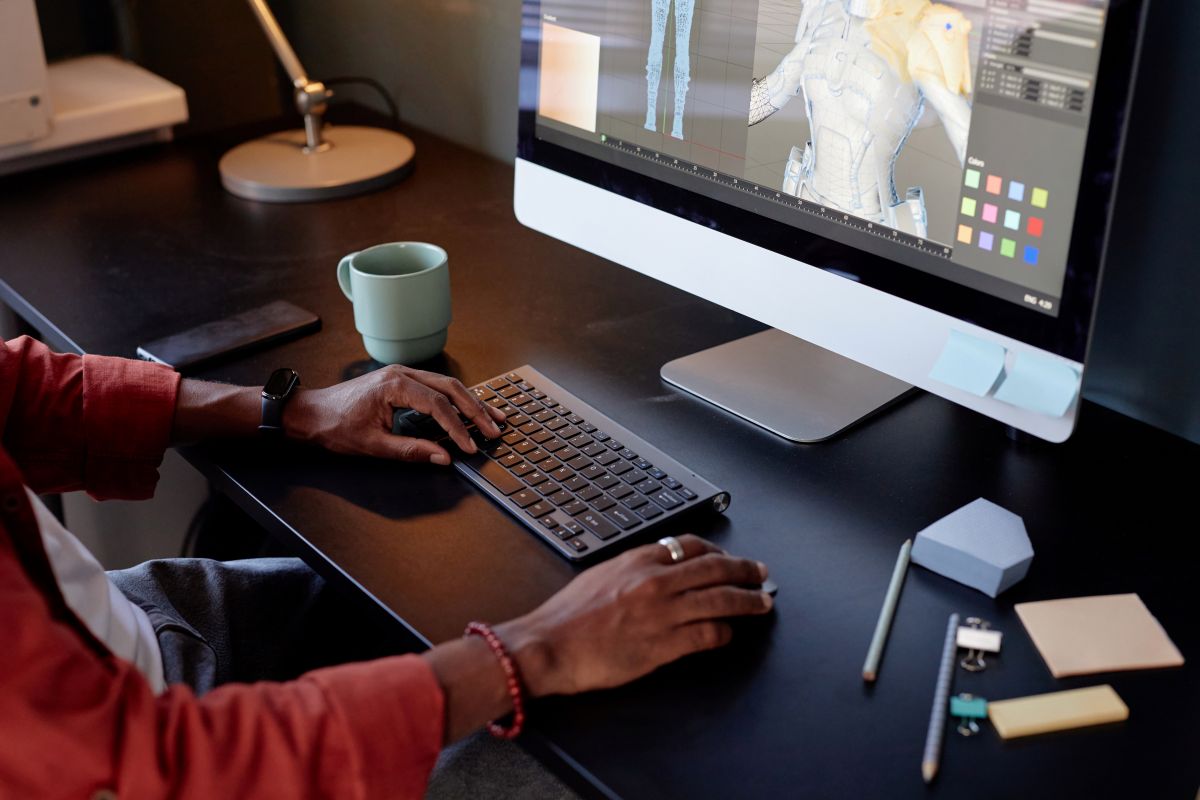
Animation Companies in South Africa: Parenting vs. Constraints
Animation has its own version of parenting, and no, it does not involve bedtime stories or school runs. Just like in real life, relationships determine control. Some objects act like strict parents—whatever they do, their children must follow. Others take a more flexible approach, using constraints to give their “kids” a little more independence. Think of a parent holding their child’s hand in a shopping mall. The child moves only when the parent moves, staying firmly within their control. This is how parenting in animation works—one object dictates the movement of another. Now, imagine a child on a backpack leash. They can roam a little, explore on their own, but they are still connected. That is constraints—allowing for some freedom while maintaining influence. This balance between structure and flexibility is a fundamental part of animation. Whether controlling a character’s limbs, a swinging prop, or even a camera movement, animators must decide when to use strict control and when to allow for independent motion. Animation companies in South Africa rely on these techniques to make sure movements feel natural and believable. While audiences only see the final, polished animation, what happens behind the scenes is a careful balance between parenting and constraints. In this article, we will explore how these techniques work, where they are used, and why they matter more than you might think.
Why These Techniques Matter
Before getting into the nitty-gritty of how parenting and constraints work, it is helpful to understand why these techniques are so important. For animators, deciding whether an object should be controlled by another (parenting) or influenced under specific conditions (constraints) can have a significant impact on the overall feel of the animation.
Imagine a character walking across the screen. If the character’s arm is parented to the torso, it will follow the torso’s movement exactly. This is great for keeping things aligned and natural, like the way your arm follows your shoulder when you walk. However, in certain cases, animators may want more flexibility, for example, in a situation where the character’s hat bobs slightly independently from the movement of their head. That is where constraints come in, letting objects move together in a way that still feels organic but allows for a little more freedom.
For animation companies in South Africa, this is not just a technical choice. It affects the viewer’s experience—whether the movement is too rigid or too loose. By making these decisions correctly, animators can craft movements that enhance the realism and fluidity of the final product. It is what separates high-quality animation from movements that feel stiff or unnatural.
Parenting vs. Constraints: Understanding the Dynamics in Animation Rigging
Now that we understand why parenting and constraints matter, let us take a look at what they are and how they differ. Both parenting and constraints are methods used to control how objects in an animation relate to one another. However, they do so in distinct ways.
Parenting is all about creating a hierarchical relationship. A parent object controls the movement of its child objects. This means that when the parent moves, rotates, or scales, the child will do the same, staying connected. This relationship is one-way—like a boss who tells their employees what to do, and the employees follow along.
On the other hand, constraints work differently. Instead of a strict hierarchy, constraints set conditions under which objects move or behave in relation to each other. This could be something like limiting the way an object rotates or making it follow another object’s movement only when certain conditions are met. In this case, the influence is more like giving guidance rather than full control—allowing objects to respond to each other while maintaining some independence.
In practice, animators often use a mix of both parenting and constraints to achieve the desired outcome. Depending on the scene and the effect they want to create, they may choose one over the other—or even combine them. Animation companies in South Africa are constantly evaluating these options to find the best solution for each unique project.
Best Practices: Strategic Application in Animation Workflows
Knowing when to use parenting and when to use constraints is key to making the right decision during an animation production. Animation companies in South Africa must choose the method that best suits the scene they are working on.
- Parenting is best used when objects need to move together in a predictable, coordinated way. For example, if animating a character driving a car, the steering wheel should move exactly with the character’s hands. Using parenting ensures that the hands and wheel stay perfectly in sync, preventing any unnatural slipping or misalignment.
- Constraints, on the other hand, are useful when objects need to follow another object while still maintaining some independent movement. If you want a character’s backpack to follow them but still shift naturally with their motion—tilting slightly when they lean forward or bouncing a little as they run—constraints are the better option.
In many cases, a combination of both is necessary. For example, a character’s head might be parented to the torso, but their eyes could be constrained to look at a particular target, allowing for flexibility in how the character’s gaze interacts with the scene.
Real-World Examples from Famous Productions
These techniques are not just theoretical—they shape how animated characters move in some of the most well-known films.
Pixar’s Toy Story
Woody’s movement changes depending on whether he is alive or playing dead as a toy. When he is an active character, his arms and legs are parented to his torso, meaning they follow along naturally when he walks, runs, or gestures. However, when a human enters the room and he drops limp, his limbs do not follow his torso in the same rigid way. Instead, constraints help give them a looser, gravity-driven motion—allowing his arms to lag slightly behind as he falls or his legs to flop down naturally after the rest of his body lands. This difference in movement helps sell the illusion that Woody is both a living character and, at times, just an inanimate doll.
Spider-Man: Into the Spider-Verse
Spider-Man’s movements in Into the Spider-Verse are a mix of controlled precision and stylised exaggeration. Parenting ensures that his limbs stay connected and move as a single unit, making sure his poses remain dynamic. Meanwhile, constraints allow for more fluid, elastic motion—like his arms and legs stretching slightly when he swings, giving his movements an extra sense of weightlessness and impact. This balance between control and flexibility is a key reason why the film’s animation feels so dynamic and unique.
These examples show how parenting and constraints can be used in tandem to create a seamless experience for the audience. Animation companies in South Africa must be adept at understanding how to mix these techniques to ensure that each scene feels authentic.
The Magic Behind the Scenes
For the average viewer, the magic of animation often seems effortless. But in reality, there is a lot of behind-the-scenes decision-making. Animators must constantly evaluate whether an object should be parented to another or constrained to follow certain conditions. These decisions, though invisible to the audience, are what make animation feel natural and believable.
When watching an animated character, one might not notice the subtle way their hat moves or the slight delay in their hand when they swing their arm. These small, often overlooked details are what set high-quality animation apart from the rest.
Final Thoughts
The next time you watch an animated film or play a video game, take a moment to appreciate the invisible choreography happening behind the scenes. That coffee cup a character casually picks up? It might be parented to their hand, ensuring it moves with them. But the liquid inside? That likely has constraints, allowing it to slosh around naturally instead of staying frozen in place like an unfortunate gelatinous mistake.
These small, carefully considered details may never cross an audience’s mind, but they are what make animation feel fluid and believable. Parenting and constraints are not just technical decisions—they shape how movement tells a story, whether it is the exaggerated elasticity of a superhero mid-swing or the lifeless, floppy limbs of a toy playing dead.
For animation companies in South Africa, mastering these techniques is part of delivering high-quality animation across various industries. Whether creating animated commercials, explainer videos, or training materials, the ability to control motion while allowing for flexibility ensures that every scene feels natural.
So while parenting in real life might come with a fair share of unpredictability, in animation, it is all about knowing when to maintain control and when to let go—just enough to make it look effortless.
Have you tried to read every book on parenting only to realise they’re completely useless for your animation project—but somehow have a lot to do with how to avoid saying ‘no’ to your child? At Sound Idea Digital, we take the guesswork out of parenting—when it comes to animation, of course. Contact us today, and let’s get started on your next animation project.
We are a full-service Web Development and Content Production Agency in Gauteng specialising in Video Production, Animation, eLearning Content Development, Learning Management Systems, and Content Production.
Contact us for a quote. | enquiries@soundidea.co.za | https://www.soundideavideoproduction.co.za| +27 82 491 5824 |

